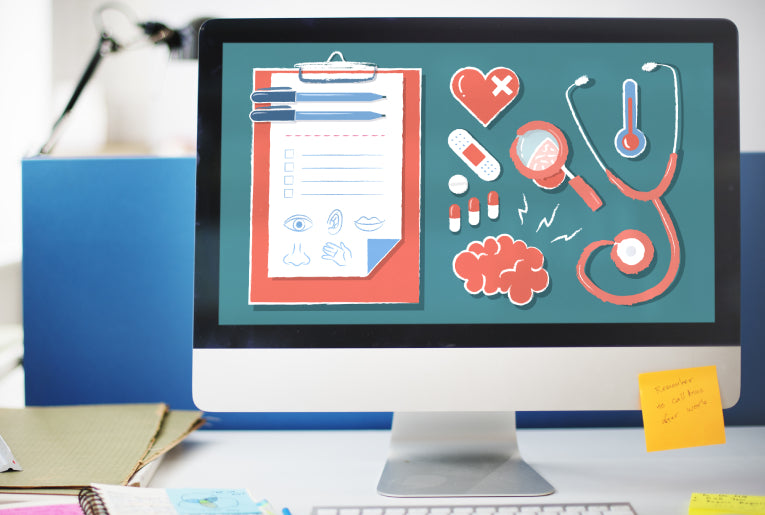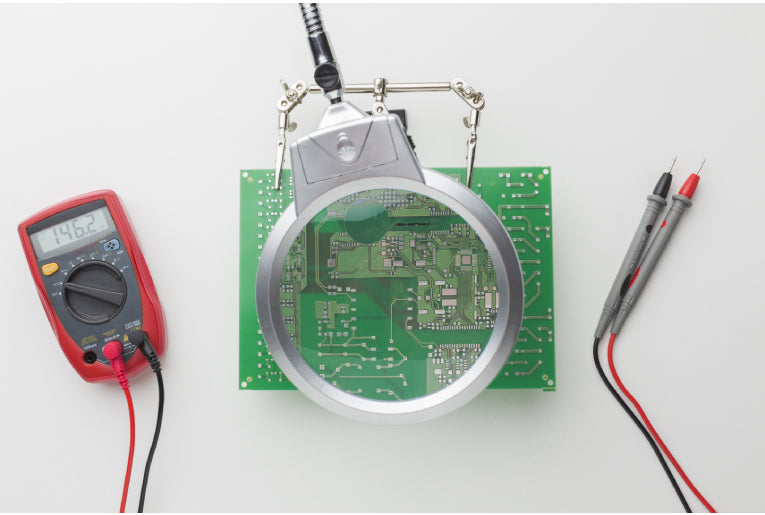
The process of launching a medical device with success is an arduous process that involves medical innovation, technology and regulatory and compliance. This complete guide will go over the eight steps that will ensure an efficient and smooth launch of a medical device. No matter if you're a veteran or are a novice to this field, these tips can serve as a vital map to help you navigate the complicated procedure.
Step 1: Define Your Vision and Identify Market Need
An announcement of medical devices starts with the creation of a concept. It should be anchored on tackling a critical health issue. To be able to successfully embark on this path, it is necessary to do a thorough market analysis to discover a valid urgent need in the medical field to which the device could respond.
market research and Identification of Needs Market research is the most fundamental stage. It involves studying the current medical landscape, studying the latest trends and areas where your product can have a significant difference. The meticulous study will be the foundation of your product's selling point.
market validation When you've identified a need it's essential to confirm it. Connect with healthcare professionals, prospective users, as well as industry experts to get an understanding of the potential market's acceptance of your product. Participate in interviews, surveys and focus groups to verify the device is compatible with what is needed.
Competitive analysis Knowing the landscape of competition is just as important. Recognize existing solutions as well as competitors within your industry. Analyze the strengths and weaknesses of these solutions to make sure your solution is effectively positioned.
Through delving into the needs of the market, doing exhaustive research, and then confirming your results, you build solid groundwork for the future phases of developing medical devices.
Step 2: Engage Medical Product Design Services
With an established idea and an established market requirement is the time to translate your idea into a concrete prototype. This is where medical device design and development services are essential. They specialize in turning concepts into user-friendly, functional designs that are compliant with the regulatory guidelines.
Collaboration with Designer Experts Collaboration with Design Experts: Getting involved in professional design and development services for medical devices does not only involve outsourcing one portion of the work; it's a team effort. Collaborate with the experts in order to share your idea and needs efficiently. Their experience in Human factors Engineering, compliance with regulations as well as usability testing, will aid in shaping the layout and design of the device.
Prototyping and iteration Prototyping is the process of creating models for the gadget. This isn't a single-step process however, it's an ongoing process. The prototypes change as you get feedback, evaluate the design, and then refine it in order to meet the needs of users as well as regulatory demands.
Usability Test Usability is one of the most important factors when designing medical devices. Testing for usability involves testing the way users interact with the prototype. It allows you to identify problems and helps refine the user interface to ensure that the product is easy to use and easy to use.
Collaboration with design and medical device solutions is a smart choice that guarantees the design of your device is not just compliant with regulatory requirements but also resonates with the end-users.
Step 3: Navigate the Regulatory Landscape
In the extremely regulated area of development for medical devices dealing with the regulatory landscape is both a challenge as well as an essential requirement. The compliance with regulatory requirements isn't something you can do; it's an essential obligation.
Learn about the Regulatory Authorities Each region has the authority to regulate them. Within the United States, the FDA (Food and Drug Administration) determines the guidelines and regulations, whereas in Europe that's an agency called the EMA (European Medicines Agency). Be aware of the authority that applies to your device, as well as the class (Class I, II or III).
Comprehensive Regulatory Strategy The development of a complete regulatory plan is vital. It should define the steps you take to obtain required approvals, like 510(k) clearance, or CE marking. The strategy should also include the risk assessment process, quality management as well as post-market surveillance strategies.
Legal Documentation Make sure you have a thorough documents for regulatory compliance. This includes a strong Design History File (DHF) which records the device's conception as well as development and testing methods. Also, create the Technical File or Design Dossier for submission to regulators.
Engage with Regulatory Experts Experts in Regulatory Affairs can help you navigate the complex process of ensuring compliance. They are up-to-date with the latest regulations, and are able to help to anticipate roadblocks and obstacles during the approval process.
Step 4: Conduct Comprehensive Testing and Validation
Before your device is able to move to production in mass quantities It must pass a thorough test and verification. A rigorous testing process ensures that your device is in compliance with requirements for safety and quality protecting both patients as well as health professionals.
Lab Testing The testing phase involves rigorous laboratory tests that test the functionality of the device, its durability as well as safety. Testing must cover a range of circumstances and situations to assure that the device is reliable.
Clinical trials Clinical trials play a crucial element of the validation process for medical devices specifically for high-risk devices. Work with research institutes or hospitals as well as medical experts to carry out well-constructed as well as rigorously controlled tests. The results of these trials are necessary for submissions to regulators, and provide valuable information about the device's efficiency.
Human Test of Human Factors Test the user-friendliness of a device through the testing of human factors. The testing analyzes how the users use the device and identifies potential usage errors, and also determining how to improve the user interface to increase the safety and efficacy of your device.
documentation and reporting Complete and accurate documentation of test protocols the results and apparent deviations is vital. The documentation is crucial when you submit the data to regulatory agencies to be approved.
Testing and validation cannot be a standard procedure for all devices. It must be suited to the device's class and purpose of use, making sure that the device is in compliance with the most stringent security and performance standards.
Step 5: Manufacturing and Quality Assurance
In the midst of regulatory approvals and a validated design on the table is the time to look into the manufacturing process and quality control. Making sure the consistency of quality in your product is essential.
The choice of a manufacturer Make a deal with an established manufacturer that has a established track record of producing medical products. Choose potential companies not only on their brand name but also factors such as the capacity of production as well as supply chain resilience and the scalability.
Quality Assurance Procedures Create a rigorous Quality Management System (QMS) which covers every aspect of manufacturing. Review and regularly update your QMS in order to keep up with changes in circumstances, technology advancements as well as regulatory demands.
Continuous improvement Quality assurance is a continuous engagement. Create a culture that encourages continuous improvement across your business. Ask the employees and others to pinpoint ways to improve.
The Supply Chain Management Maintain a stable supply chain that ensures the same product production. Review supplier performance regularly Diversify sources if needed as well as implement risk reduction methods to reduce disruptions in supply.
Quality assurance goes beyond the manufacturing process. it extends across the complete lifespan, from the initial design phase to post-market inspection.
Step 6: Develop a Comprehensive Marketing Strategy
A solid marketing plan is vital to ensure your medical device receives the recognition and visibility it deserves on the market.
Determine the the target audience Define clearly your intended audience. Consider the end-users and healthcare professionals. Always update your analysis of audience in order to keep up with changing health patterns and trends.
Key messaging Make powerful key messages that explain how your product addresses the market's needs and sets itself apart from other competitors. They must be refined on the basis of actual feedback from users and information from the market.
Multi-Channel Approach: Implement a multi-channel marketing approach. Review the results of the marketing channels you use and modify your approach to suit. Review data to find out which marketing channels are the most efficient in engaging and reaching your target market.
Alliances and Partnerships Consider forming collaborations with hospitals or research organisations, as well as prominent opinion leaders within the field you work in. These partnerships can add credibility to your device, and aid in the adoption of your device in the health care ecosystem.
Conformity in Marketing Regulations: Be informed of and abide by rules for marketing that are specific for medical devices. Be sure that the promotional material and advertisements are compliant with the rules and regulations set forth by the regulatory authorities.
The development of a solid marketing strategy will require constant adaptation to evolving the market and feedback from customers.
Step 7: Secure Distribution and Sales Channels
Setting up efficient distribution and sales channels is an essential element in bringing your medical product to the market. This ensures that your product is available to the people it is intended for.
Distributor Partnerships Create strategic alliances with distributors that have an established presence in the health industry. The partners must be familiar with how to navigate the marketplace and be able to establish relations with the key players.
Training and Sales Form an experienced sales team who are knowledgeable about the distinct capabilities and advantages of the device. Offer comprehensive training in order to ensure they effectively communicate your product's value for potential buyers.
The Regulatory Compliance of Distribution Check that the distributors you choose to work with adhere to the regulations in the supply of medical equipment. It includes keeping accurate documentation and adhering with the safety and quality requirements.
World Expansion Strategy If you have ambitions that go beyond the local market, you should develop an expansion plan for the world. Think about factors like the requirements of international regulations along with market dynamics as well as logistical considerations for expansion into new areas.
The process of securing sales channels and distribution is not an one-time endeavor It is a continuous process that needs constant evaluation and improvement.
Step 8: Execute a Controlled Product Launch
Before you fully introducing your medical device to the marketplace, you must conduct an organized launch. This will allow the user to get valuable feedback and evaluate the real-world results and then make any needed modifications.
Limited Geographic release A controlled product launch generally involves the introduction of your product to a specific geographic region or in select health institutions. The controlled setting allows the user to observe its effectiveness and collect feedback from users.
Feedback gathering Ask for feedback from patients, users, professionals and other stakeholder. Examine user satisfaction, pinpoint any problems, and then make the necessary improvements in the future.
Monitoring as well as Post-Market surveillance Set up an after-market surveillance strategy to track your device's performance while in the field. The plan must include methods for capturing adverse incidents, conducting post-market clinical studies, as well as reporting to regulators.
Iterative Enhancement Make use of the knowledge that you gained from the launch stage controlled to improve your device as well as its user interface as well as the materials that support it. Continuous improvement is the key for enhancing the user experience while making sure that safety and efficiency are maintained.
The controlled launch acts as the last checkpoint prior to an official market release. It allows the company to tackle any unexpected issues and refine your strategy.
Key Takeaways
- Definition of an Clear Vision: A clear vision that is based on addressing an actual need in healthcare serves as the foundation of your medical device's product launch.
- Utilize Medical Product Design Services Collaboration with designers to turn your ideas into functional prototype that focuses on user-centric design as well as regulatory compliance.
- Access Regulation Requirements Understanding and complying to regulatory requirements isn't something that can be negotiated within the field of medical devices. Get the help of experts in regulatory compliance for assistance through the procedure.
- Conduct rigorous testing A thorough testing process and verification ensures that your device is in compliance with the high standards of safety and efficiency.
- prioritizing Manufacturing Quality: Partner with a reliable manufacturer to establish strict procedures for quality control to ensure quality and consistency in the product.
- Develop a marketing strategy Make a thorough marketing plan that pinpoints the audience you want to reach, communicates important messages efficiently by leveraging different media.
- Secure Distribution Channels Create effective sales and distribution channels in order to successfully reach out to your market.
- Conduct a controlled launch prior to a complete public release, run the launch in a controlled manner to collect feedback, evaluate the performance of the product, and then make any necessary adjustments.
The success of the launch of a medical device is dependent on a meticulous and meticulous strategy. These proven eight steps offer an extensive guideline for how to navigate the maze of development for medical devices without fear. Remember the interdependence of each step so careful preparation and execution is essential in every step. If you follow this thorough guideline, you will dramatically increase the odds of a smooth and efficient medical device launch in the end, having a positive impact on the field of healthcare.
Leave a comment (all fields required)
Comments will be approved before showing up.


